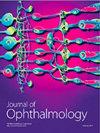飞秒激光lensx辅助成熟膨胀性白内障超声乳化术
IF 1.8
4区 医学
Q3 OPHTHALMOLOGY
引用次数: 0
摘要
背景:成熟膨胀性白内障的超声乳化术是最困难的前眼手术之一。在成熟的扩张性白内障晶状体中,最困难的阶段是进行连续的撕囊术,撕囊术应尽可能圆。据报道,在撕囊术中前囊撕裂的发生率为0.8 - 5.0%,并随着白内障密度的增加而增加。这是因为在致密性膨胀性白内障中,由于囊内高压,撕囊倾向于向外周延伸。飞秒激光辅助成熟膨胀性白内障的白内障切除术是一种安全的激光辅助白内障囊切开术,术中并发症的风险大大降低。由于这种方法尚未在眼科中广泛应用,我们的目的是分享我们在成熟和膨大性白内障的超声乳化术中使用飞秒激光的经验。目的:评价飞秒激光辅助治疗成熟型膨胀性白内障的疗效。方法:对65例(68眼)成熟型膨胀性老年性白内障行飞秒激光辅助白内障手术(FLACS)联合人工晶状体植入术。结果:55只眼(80.8%)完全完成了所需直径(5.0 mm)的激光包膜切开术。8只眼(11.7%)出现囊桥(激光辅助切割前囊部位的囊组织残余)。此外,在激光手术阶段后,3只眼(4.4%)由于激光未能在多个区域切开前囊而出现形状不规则的前囊盘。在所有的研究眼中,人工晶状体在袋内的中心位置良好。结论:对于成熟的膨出性白内障,采用飞秒激光安全、准确地进行前囊撕脱术是合理的,可避免人工撕脱术中出现的严重并发症(后囊膜破裂、玻璃体脱垂)。本文章由计算机程序翻译,如有差异,请以英文原文为准。
Femtosecond laser LenSx–assisted phacoemulsification of mature intumescent cataract
Background: Phacoemulsification (phaco) of mature intumescent cataract is one of the most difficult to perform anterior eye surgeries. In mature intumescent cataract phaco, the most difficult phase is performing a continuous capsulorhexis which should be as round as possible. The incidence of an anterior capsular tear during capsulorhexis has been reported to range from 0.8 to 5.0% and increases with an increase in cataract density. This is because in dense intumescent cataracts, capsulorhexis tends to extend to the periphery due to high intracapsular pressure. Femtosecond laser–assisted phaco of mature intumescent cataract enables a safe laser-assisted capsulotomy with a substantially reduced risk of intraoperative complications. Because this approach is as yet not widely used in ophthalmology, we aimed to share our experience in the use of femtosecond laser in phacoemulsification of mature and intumescent cataracts. Purpose: To assess the efficacy of femtosecond laser–assisted treatment of mature intumescent cataract. Methods: Sixty-five patients (68 eyes) with mature intumescent senile cataract underwent femtosecond laser-assisted cataract surgery (FLACS) with intraocular lens (IOL) implantation and were involved in this study. Results: In 55 eyes (80.8%), laser capsulotomy of the desired diameter (5.0 mm) was performed completely. In 8 eyes (11.7%), capsular bridges (capsular tissue remnants at the site of laser-assisted cut of the anterior capsule) were seen. In addition, after the laser phase of surgery, 3 eyes (4.4%) showed an irregularly shaped anterior capsular disc due to the failure of the laser to cut through the capsule in several regions. In all study eyes, the IOL was well centered in the bag. Conclusion: In eyes with mature intumescent cataract, it is reasonable to use the femtosecond laser for a safe and accurate anterior capsulorhexis to avoid the severe intraoperative complications (those associated with posterior capsular rapture and vitreous prolapse) that can be seen during manual capsulorhexis.
求助全文
通过发布文献求助,成功后即可免费获取论文全文。
去求助
来源期刊

Journal of Ophthalmology
MEDICINE, RESEARCH & EXPERIMENTAL-OPHTHALMOLOGY
CiteScore
4.30
自引率
5.30%
发文量
194
审稿时长
6-12 weeks
期刊介绍:
Journal of Ophthalmology is a peer-reviewed, Open Access journal that publishes original research articles, review articles, and clinical studies related to the anatomy, physiology and diseases of the eye. Submissions should focus on new diagnostic and surgical techniques, instrument and therapy updates, as well as clinical trials and research findings.
 求助内容:
求助内容: 应助结果提醒方式:
应助结果提醒方式:


